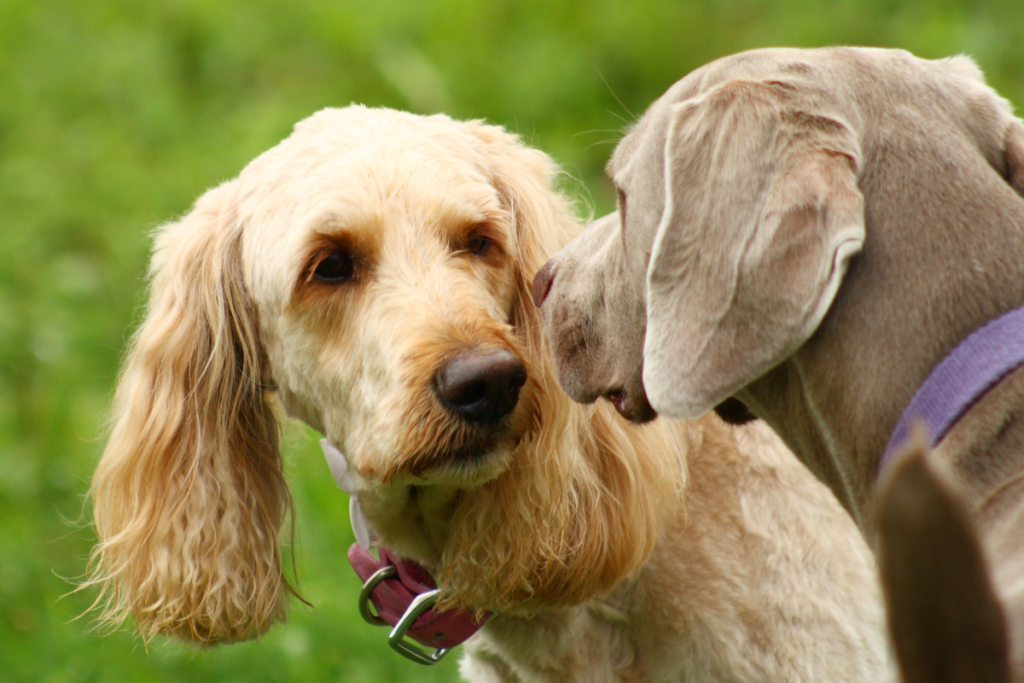
Adding a new dog to the household comes with an element of stress, and whether it’s a foster dog, a dog you’re minding, a new puppy or adult dog, there are some simple rules to follow and management strategies to put in place to ensure all goes smoothly.
The Right Choice
Consider how your existing pet/s will cope with a new dog. What sort of dogs does your existing dog usually get along with? Male, female, small dog, large dog, older dog or a puppy? What will fit in best with your household and routine?
Introductions
Try to build the dog’s relationship first by meeting for several short walks in a neutral location.
If that isn’t possible, take the dogs for a walk together from your home. Mutual walks can build relationships as the dogs don’t have to interact with each other, just be enjoying doing something nice together. If you have a new puppy, carry the puppy along on the walk.
Separations
Even if the dogs get along beautifully on walks and play dates, doesn’t mean they will get along when living together 24 hours a day. Make sure you have a separate area for your new addition.
This can be a separate part of the yard, a separate room, a crate or exercise pen. Existing pets, especially elderly pets, should have time apart from the new addition, and a place to retreat to if it all gets too much.
Read Body Language
It is important to be able to read the more subtle body language signals that may indicate a dog is feeling scared or anxious. Being familiar with canine body language will enable you to diffuse potential snarks early before they escalate and give each dog some space and time to process the changes. Learn more about your dogs body language in this fact sheet from Pawsitive Connections, Canine Body Language Guide.
Supervision
We recommend supervising ALL interactions between new and existing pets until you are confident they can resolve small conflicts amicably. If you are unsure, set up a video camera to check interactions when you aren’t around. Leave alone only for short periods of time initially and allow controlled interactions and short play times to keep it positive.
Management and Training
Your new dog will take some time to understand your ‘house rules’ – where he/she is supposed to sleep, ‘no go’ zones and the daily routine. Standard rules apply for food such as feeding meals, bones and other high value treats separately.
Make sure you teach your new dog what you expect of them, rather than expecting them to learn after a few days. Repetition and positive reinforcement will get you there.
Building Positive Associations
Along with walking together, you can also build positive associations by sharing treats and playing games. Basically, when the ‘new’ dog is around, good things happen!
If you notice any ‘jealous’ signs such as one dog being pushy or getting snappy, take it back a notch to mutual walks and more careful management.
Managing Stress
Bringing a new dog into the house can be very stressful for all involved! Try using a pheromone called Adaptil, which can help reduce stress and anxiety in dogs. You can also try using Zylkene capsules leading up to the introduction.
Enjoy your new dog! Remember that it was your choice to bring home another dog, so set all dogs up for success and take it slow to build the relationships positively.
Professional help
If you are looking for extra help or guidance contact a qualified trainer. To find a trainer in your area click here.
References and Further Reading
Coren, S (2014) Aggression Between Dogs in the Same Household, Canine Corner, Psychology Today http://www.psychologytoday.com/blog/canine-corner/201404/aggression-between-dogs-in-the-same-household
London K, McConnell P (2008) Feeling Outnumbered? – How to manage & Enjoy a Multi-Dog Household 2nd Ed. Dogwise Publishing Washington
McMullen, D (2010) How Many Dogs?! Using Positive Reinforcement Training to Manage a Multiple Dog Household, Tanacacia Press, USA
